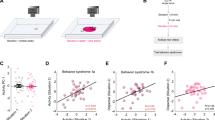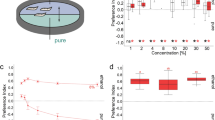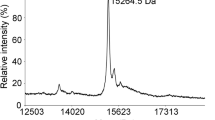Abstract
SEVERAL attractants and repellents which are highly specific for a given species or sex have been identified in the last decade. Although much effort has been concentrated on demonstrating the molecular basis of odour perception in insects, the mechanisms involved are still far from clear1. As the complicated network of cellular function in chemotaxis has been successfully analysed in bacteria, using a mutation which indicates alteration of one element involved at a time, a similar approach is expected to be fruitful in studies of the olfactory system2,3. Drosophila is the insect of choice for such studies because of its large stock of marker genes and crossing-over suppressors which are essential for the isolation of induced olfactory mutants. Recent success in the isolation of behavioural mutants of Drosophila has thrown light on this subject4. I shall describe here the properties of an olfactory mutant of Drosophila melanogaster and the molecular characteristics of the odours to which the mutant responded specifically.
This is a preview of subscription content, access via your institution
Access options
Subscribe to this journal
Receive 51 print issues and online access
$199.00 per year
only $3.90 per issue
Buy this article
- Purchase on Springer Link
- Instant access to full article PDF
Prices may be subject to local taxes which are calculated during checkout
Similar content being viewed by others
References
Kaissling, K. E., in Handbook of Sensory Physiology, 4, Chemical Senses (edit. by Beidler, L. M.), 351 (Springer-Verlag, New York, 1971).
Adler, J., Science, 166, 1588 (1969).
Hazelbauer, G. L., and Adler, J., Nature New Biology, 230, 101 (1971).
Benzer, S., J. Amer. Med. Assoc., 218, 1015 (1971).
Conant, J. B., and Thompson, A. F., J. Amer. Chem. Soc., 54, 4039 (1932).
Hammond, G. S., in Steric Effects in Organic Chemistry (edit. by Newman, M. S.), 376 (Henry Holt, New York, 1965).
Schwarzenwach, G., and Felder, E., Helv. Chim. Acta, 27, 1044 (1944).
Koshishima, K., and Izumi, K., in Olfaction and Taste (edit. by Hayashi, T.), 2, 707 (Pergamon Press, 1967).
Author information
Authors and Affiliations
Rights and permissions
About this article
Cite this article
KIKUCHI, T. Specificity and Molecular Features of an Insect Attractant in a Drosophila Mutant. Nature 243, 36–38 (1973). https://doi.org/10.1038/243036a0
Received:
Revised:
Issue Date:
DOI: https://doi.org/10.1038/243036a0
This article is cited by
-
A sniff at odor detection
Nature India (2008)
-
In search of a model system for exploring the Chemical Legacy Hypothesis:Drosophila melanogaster and geraniol
Journal of Chemical Ecology (1991)
-
Intrapopulational variation of olfactory responses inDrosophila melanogaster
Behavior Genetics (1989)
-
Genetical analysis of intrapopulational variation in olfactory response in Drosophila melanogaster
Heredity (1988)
-
Genetic analysis of chemosensory pathway
Proceedings / Indian Academy of Sciences (1978)
Comments
By submitting a comment you agree to abide by our Terms and Community Guidelines. If you find something abusive or that does not comply with our terms or guidelines please flag it as inappropriate.



